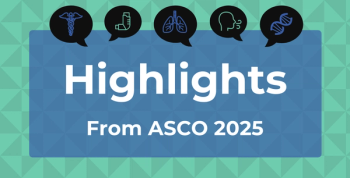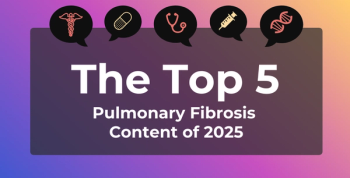
Government Shutdown Could Disrupt Health Care Access
Key Takeaways
- The government shutdown highlights partisan divisions over health care funding, with Democrats pushing for ACA subsidy extensions and Republicans seeking a separate policy debate.
- Telehealth and home care services face potential disruptions, impacting rural and mobility-limited patients, with possible shifts back to in-person visits.
The US government shutdown could lead to telehealth, ambulance payment, and insurance cost disruptions.
When the US federal government shut down on Wednesday, October 1, health care providers and patients assessed what could happen next. Although some core programs are expected to continue, others face possible pauses, reduced reimbursements, and coverage changes.
The government shutdown reflects deep partisan divisions over health care funding. Democrats demand extending expiring Affordable Care Act (ACA) subsidies to prevent sharp premium increases, framing it as essential for protecting millions of Americans, according to the Associated Press.1 They oppose any funding bill that omits these provisions. Republicans insist health care policy should be debated separately, pushing for a “clean” funding bill without subsidies or Medicaid changes.
“I want to inform you directly that, as of midnight on September 30, 2025, the federal government has entered a shutdown,” announced Congresswoman Jan Schakowsky, representing the 9th District of Illinois,
Both sides see the standoff as pivotal, with Democrats focusing on protecting coverage and Republicans emphasizing separate policy debate and fiscal priorities.1
“Senator Schumer and the Democrats have made it clear that they intend to shut down the federal government,” said Sen. Ted Cruz (Texas, R),
Telehealth and Home Care May See Service Gaps
The shutdown immediately threatens the stability of Medicare’s expanded telehealth authority, according to PBS.4 Many emergency rules allowing virtual visits during the pandemic could be suspended if funding lapses persist. This would most impact rural and mobility‑limited patients who rely on telehealth for specialist care. Programs that support hospital‑at‑home or home‑based services also face uncertainty, as waivers may expire without congressional action.
Such disruptions could force providers to limit virtual care offerings or shift patients back to in‑person visits, which could delay care and add costs. Seniors and patients with chronic conditions stand to be most affected. For providers, reimbursement uncertainty could impact staffing, technology investments, and program sustainability.
Ambulance Services Could Face Payment Changes
Ambulance providers face immediate uncertainty due to the shutdown.5 The American Ambulance Association warns that certain ground ambulance add‑ons, supplemental payments for urban, rural, and specialized services, expired September 30, 2025. Without congressional reauthorization, these claims will be reimbursed at base rates, reducing provider revenue.
Although Medicare will continue processing claims, the loss of add‑on payments could have ripple effects. Providers—particularly smaller and rural operators—might reduce service capacity, limit routes, or postpone equipment upgrades. Reduced reimbursements could strain emergency response systems, potentially increasing wait times. Patients in rural or underserved areas could be disproportionately impacted. If the shutdown continues, these payment changes could last months, affecting ambulance availability and public safety.
Insurance Premiums Could Increase
Even if the shutdown is resolved quickly, lapses in the ACA marketplace subsidy extensions could cause premiums to rise in 2026, according to MarketWatch.6
Some estimates suggest ACA exchange participants could pay 3 or 4 figures more per month, with yearly premiums rising from about $900 to more than $1900. Nearly half of exchange enrollees are self‑employed or work for very small businesses, and up to 4 million could lose coverage throughout a decade without subsidies.
Employers also expect rising costs, with surveys projecting a 6.5% increase in health care costs per worker in 2026. Many plan to pass expenses onto employees through higher premiums and out‑of‑pocket costs. Medicare Part B premiums could climb nearly 12%, adding further strain for older Americans. These shifts hinge on how long the shutdown lasts and whether lawmakers extend ACA enhancements.
References
1. Mascaro L, Jalonick MC, Groves S. Government shutdown begins as the nation faces a new period of uncertainty. Associated Press. October 1, 2025. Accessed October 1, 2025.
2. Government shutdown information. Congresswoman Jan Schakowsky. September 30, 2025. Accessed October 1, 2025.
3. Sen. Cruz statement on Sen. Schumer’s government shutdown: US Senator Ted Cruz of Texas. Senator Ted Cruz. September 30, 2025. Accessed October 1, 2025.
4. Medicare, FEMA and air traffic control: How a government shutdown could impact public services. PBS. September 30, 2025. Accessed October 1, 2025.
5. Impact of potential federal government shutdown on Medicare payments. American Ambulance Association. September 30, 2025. Accessed October 1, 2025.
6. Keshner A. As government shuts down, here’s how much your health insurance could go up next year. MarketWatch. Updated October 1, 2025. Accessed October 1, 2025.
Newsletter
Stay ahead of policy, cost, and value—subscribe to AJMC for expert insights at the intersection of clinical care and health economics.







































